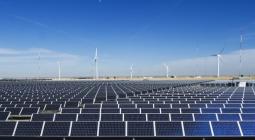If you think renewable energy is expensive… you haven’t actually priced fossil fuels.

There’s a new working paper that was covered by Axios this week which makes some rather bold claims about the high cost of policies that require a certain percentage of power to be generated from renewable sources. Whether those claims will stand up to peer-review, though, is yet to be seen.
The working paper looks specifically at how to incorporate three ancillary issues to adopting renewables that aren’t included in the regular price, which, they note, is largely lower than fossil fuels. To do so, they studied states that have adopted a renewable standard, took into account how much they’ve installed in the past 7 to 12 years, and looked at what energy prices in those states have done. Turns out prices have gone up, and possibly by more than the social cost of carbon would suggest it would be worth.
While the report is authored by economist Michael Greenstone, a champion of Obama’s Social Cost of Carbon and in no way the sort of person who normally appears in this column, it has some serious issues that experts were quick to call out.
You don’t even really need to dig into the paper, though, to see that it isn’t saying that renewables themselves, or even RPS policies are inherently too expensive, as the Axois story suggests. Instead, it’s a warning that the transition to clean energy entails some additional expenses: the cost to build back-up natural gas plants for when renewables aren’t generating, the cost of building new transmission lines to remote renewable projects, and the cost of stranded assets.
On the first point, yes, it’s expensive to have to build a natural gas plant to keep on standby for when renewables aren’t generating enough. Increasingly, though, utilities are turning to batteries instead because they’re cheaper, meaning there is no long-term reason to keep building new natural gas plants. And more importantly, it’s the natural gas plants that are expensive, not the renewables!
On the second point, also yes, it’s expensive to build transmission lines to get power generated at remote solar or wind farms to where people live. But building these new lines is something we should have embarked on at least a decade ago, had politics not stood in the way of reinforcing infrastructure to prepare for climate change. After all, a key way to make the grid resilient to extreme weather is to make it bigger, so an outage in one region can be compensated for by power from elsewhere.
The third point is the big one, though. The report authors identify stranded assets as a key source of costs for renewable mandates, as fossil fuel plants are shut down and replaced. But it’s not wind’s fault that fossil fuel plants are incompatible with sustaining life on this planet, and it’s certainly not solar’s fault that rate payers are forced to pay for companies to recoup the cost of shuttering fossil fuel plants.
After all, odds are that the highest costs of stranded assets are from newer plants that were built recently, and therefore have the most profit-generating life ahead of them that has been prematurely cut short by these renewable mandates.
But when were those assets built? Were they built well after the company knew that climate change would require a transition away from fossil fuels? And did any of these companies decide that instead of moving into renewables early, they would rather bankroll propaganda campaigns so they could keep burning fossil fuels?
That’s still not the whole thing, though, because the report excludes one of the biggest issues that informs the social cost of carbon: co-benefits. The first sentence of the press release ends by saying that renewable mandates cost more than they provide in benefits. However, a sentence in the second-to-last paragraph shows that they didn’t even really try to capture the full scope of benefits, because it did not look at how renewable mandates impact criteria pollutants.
That’s a huge omission. After all, when the Trump administration wanted to make the Clean Power Plan and other climate policies look too expensive, one of their key tactics was to strip out health co-benefits. And it’s clear why. One study pegged the health co-benefits of a Clean Power Plan-esque policy to be around $29 billion, with net benefits (so with costs subtracted) being around $12 billion.
How would that inclusion change the outcome of the study? Perhaps we’ll know after the paper goes through peer-review. But for now, we know that when you don’t include the benefits of improved public health, it looks really expensive to build new transmission lines and new fossil fuel power plants, while also paying to shut down fossil fuel power plants that should never have been built.
(Crossposted with DailyKos.)
April 2019
Red Green and Blue







